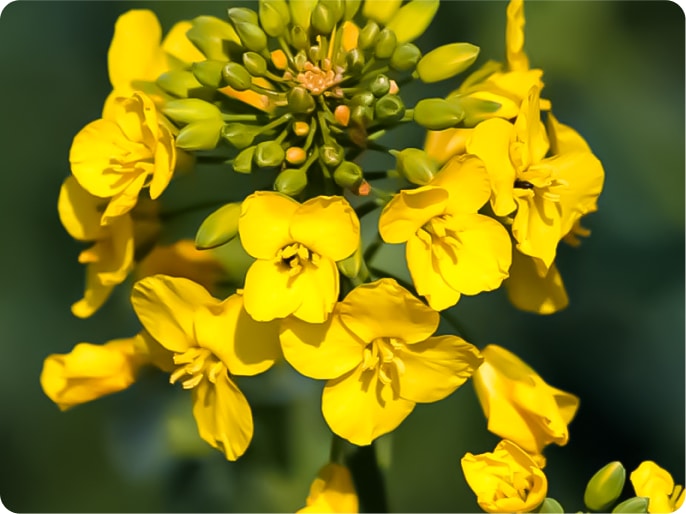
Spring rapeseed
The fruit is a pod, narrow, straight, 5 to 10 cm long, smooth with a thin long nose, cracking when ripe. Seeds are small, black or brown in color, with a smooth surface. The mass of 1000 seeds is 2.6-5 g. Their fruit contains from 18 to 30 pieces. Spring rapeseed is a cold-resistant plant; its seeds begin to germinate at a temperature of 1–3°C. It is valued for its ability to grow quickly and build up a large (largest among cruciferous green manure) green mass in cold autumn and spring periods.
Its seeds contain from 35 to 45% slightly drying oil (iodine value 101), 21% protein and up to 17-18% carbohydrates. Spring rapeseed oil is usually used for technical purposes (soap, textile, paint and varnish, metallurgical and other industries Oil of non-erucic grades is distinguished by high taste qualities, it is widely used in food and in various branches of the food industry. Spring rape cake contains a lot of protein (up to 38-40%), well balanced in amino acid composition.
The amount of lysine in it reaches 6.1%. However, its nutritional value is low due to the high (up to 6%) content of harmful glucosinolates, which give it a bitter taste and negatively affect the functioning of the thyroid gland (especially in pigs and poultry). Therefore, it must be fed in small doses and after special treatment. Oilcake of non-erucic and low-glucosinolate varieties does not have any negative effects on the organism of animals. The green mass of spring rapeseed is widely used for fodder purposes. It contains 4.9-5.1% protein, that is, 2 times more than in the green mass of corn and sunflower. Spring rapeseed is a good honey plant.
